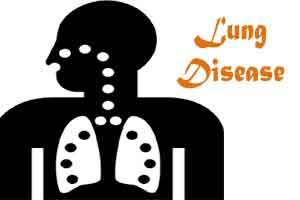- Home
- Editorial
- News
- Practice Guidelines
- Anesthesiology Guidelines
- Cancer Guidelines
- Cardiac Sciences Guidelines
- Critical Care Guidelines
- Dentistry Guidelines
- Dermatology Guidelines
- Diabetes and Endo Guidelines
- Diagnostics Guidelines
- ENT Guidelines
- Featured Practice Guidelines
- Gastroenterology Guidelines
- Geriatrics Guidelines
- Medicine Guidelines
- Nephrology Guidelines
- Neurosciences Guidelines
- Obs and Gynae Guidelines
- Ophthalmology Guidelines
- Orthopaedics Guidelines
- Paediatrics Guidelines
- Psychiatry Guidelines
- Pulmonology Guidelines
- Radiology Guidelines
- Surgery Guidelines
- Urology Guidelines
3D Imaging Technique To Precisely Spot Deadly Lung Disease

London : Using advanced 3D X-ray imaging technology, a team of British scientists has revealed how an aggressive form of lung disease develops in the body.
Originally designed for the analysis of engineering parts such as jet turbine blades, the powerful scanning equipment at the University of Southampton has been used to image Idiopathic Pulmonary Fibrosis (IPF) lung tissue samples for the first time.
IPF is usually diagnosed via a hospital CT scan or by using a microscope to view a lung biopsy sample.
Southampton researchers have now successfully applied "Microfocus CT" machine to image biopsy samples.
This allowed them to view each lung sample with a level of detail similar to an optical microscope but now in 3D.
While accurate diagnosis of IPF is essential to start the correct treatment, in certain cases, this can be extremely challenging to do using the tools currently available.
"This technology advance is very exciting as for the first time it gives us the chance to view lung biopsy samples in 3D. We think that the new information gained from seeing the lung in 3D has the potential to transform how diseases such as IPF are diagnosed," said Mark Jones, a Welcome Trust fellow from the University of Southampton.
"It will also help increase our understanding of how these scarring lung diseases develop which we hope will ultimately mean better targeted treatments are developed for every patient," he added in a paper appeared in the journal JCI Insight.
The research team believes the finding will help to ensure doctors develop targeted therapies focussing on these areas.
The condition, one of a group of disorders known collectively as interstitial lung diseases, causes inflammation and scarring of the lung tissue.
This makes it increasingly difficult to breathe and it leaves sufferers with a life expectancy of only three to five years.
The Southampton team are now studying how this technique can help doctors improve the way we diagnose such diseases more accurately.

Disclaimer: This site is primarily intended for healthcare professionals. Any content/information on this website does not replace the advice of medical and/or health professionals and should not be construed as medical/diagnostic advice/endorsement or prescription. Use of this site is subject to our terms of use, privacy policy, advertisement policy. © 2020 Minerva Medical Treatment Pvt Ltd